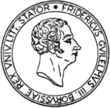Coplanar toothed disk adding machine by Charles Stanhope from 1780
The Englishman Charles Viscount Mahon, Third Earl of Stanhope (1753-1816), invented this 12-digit adding machine in 1780, the original of which is now in the Old Ashmolean Museum in Oxford. He had previously built two four-species calculating machines (1775 and 1777, both Science Museum, London), of which working replicas are also on display in the Arithmeum. Stanhope employed the clockmaker James Bullock to build the adding machine. This is evidenced by the inscription on the front of the machine: “Visc[oun]t Mahon Inv[enit] 1780 Ja[me]s Bullock Fecit”.
The adding machine has a coplanar arrangement of dials and is set up for English currency. It calculates in the range from “Farthings” to “Hundred Million”. The individual disks are set by means of a pin and are connected to each other by transfer teeth, also known as single teeth. As Stanhope did not use intermediate gears in this calculating machine to maintain the direction of rotation in the result unit, a clockwise rotating result unit display is followed by a counterclockwise rotating result train display and vice versa.
In the interesting 3D animation by Jan Malte Bachmann, which he created as part of the lecture series on the history of machine computing with Professor Dr. Ina Prinz, the calculation process explained above can be understood in detail and it is clarified whether a tens carry over all digits of the machine is possible. We hope you enjoy discovering our new calculating machine of the week!






